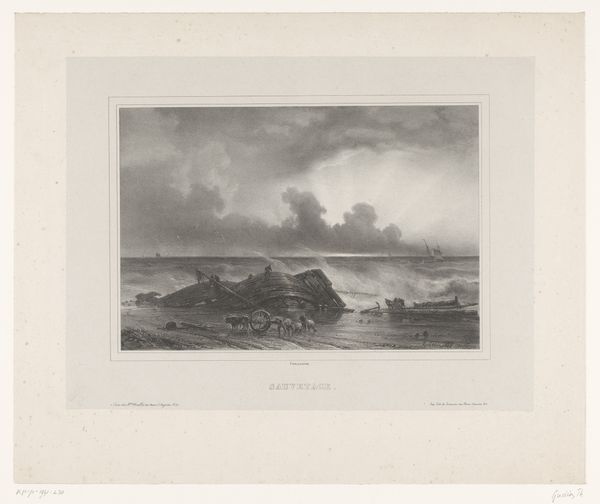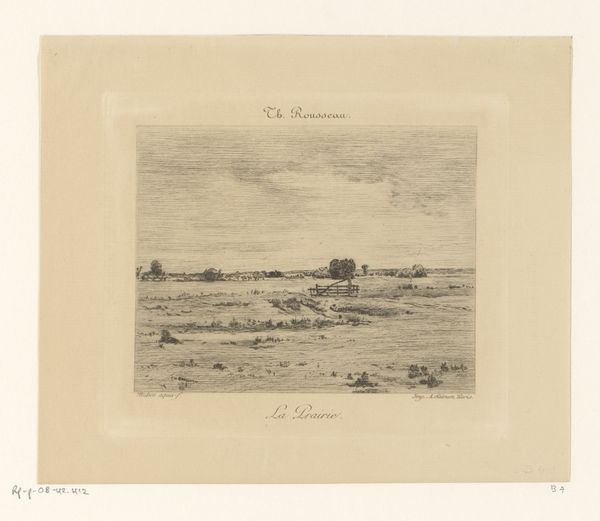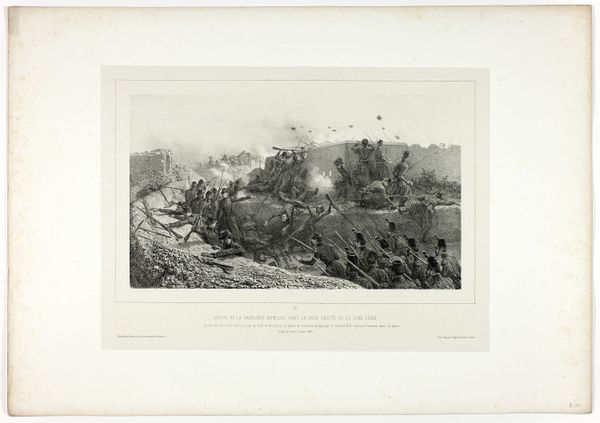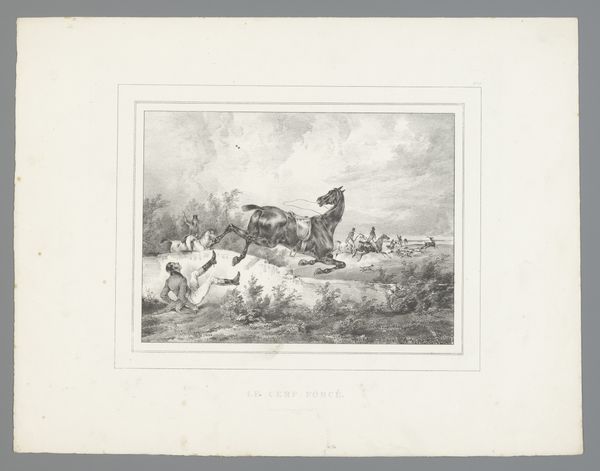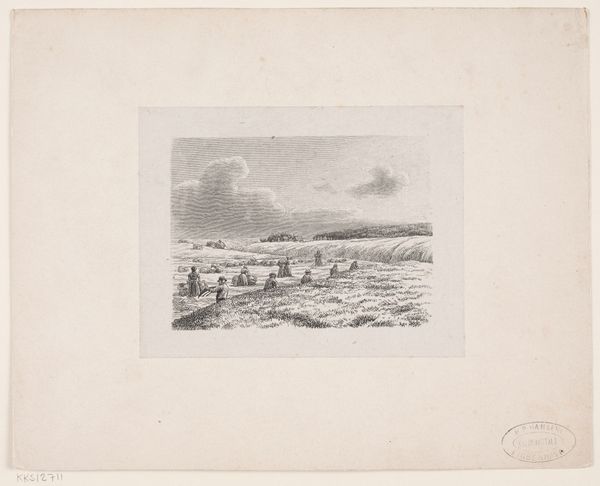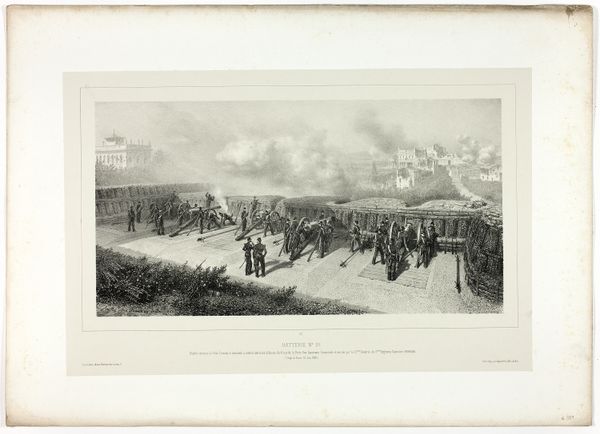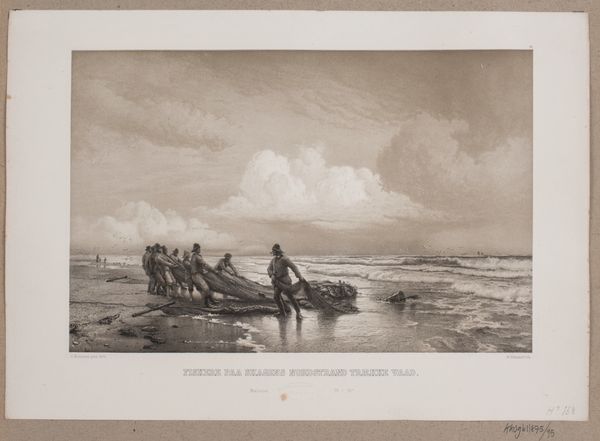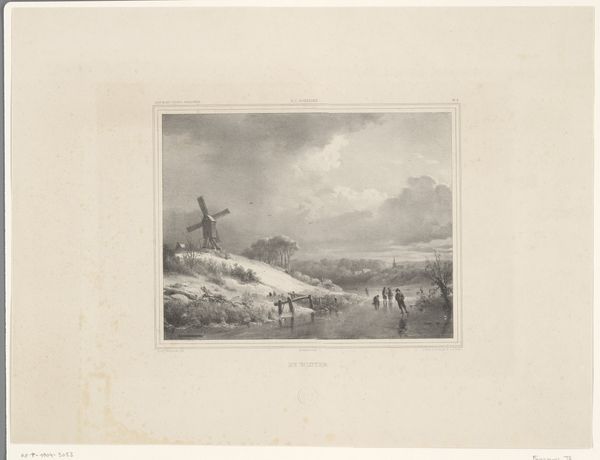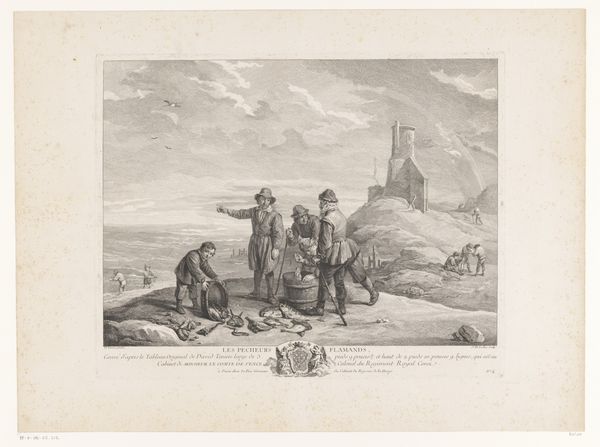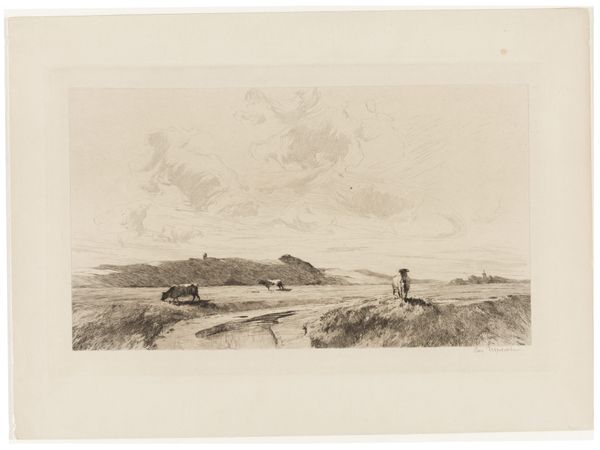
Capture of Bastion no. 9, from Souvenirs d’Italie: Expédition de Rome c. 1860
0:00
0:00
drawing, lithograph, print, paper
#
drawing
#
lithograph
# print
#
paper
#
genre-painting
#
history-painting
#
realism
Dimensions: 168 × 373 mm (image); 250 × 421 mm (primary support); 400 × 570 mm (secondary support)
Copyright: Public Domain
Curator: This lithograph by François Hippolyte Lalaisse, dating from around 1860, is titled "Capture of Bastion no. 9, from Souvenirs d’Italie: Expédition de Rome." Editor: It’s a bleak and powerful scene. The immediate impression is one of intense violence, isn't it? A raw depiction of aftermath... of bodies strewn about and figures silhouetted on some kind of rampart in the background. Curator: Indeed. It commemorates a specific event during the French expedition to Rome. We see the stark realism of battle, but the symbols speak to larger power structures at play, an echo of centuries of conflict in that landscape. Editor: Absolutely. One feels the artist is definitely engaging with history-painting traditions but subverting it at the same time. It does depict heroism, but it shows a price to pay as well, what seems like a very unflattering glimpse of colonial activity. Who do you think it glorifies, if anyone at all? Curator: Lalaisse may not necessarily be "glorifying" as much as documenting from a certain point of view, and possibly aiming for some amount of historical accuracy... consider the conventions of genre painting that blend into depictions of conflict. The symbolism resides less in celebrating victory, perhaps, and more in evoking an overwhelming sense of… consequence. Editor: Yes, I get it, and I see that there's also that fascinating push and pull between recording an actual moment of historical impact versus propagating its meaning, and potentially using the artwork to legitimize the colonial endeavour as some have said about similar pieces. But I wonder about the fallen. Look at them scattered in the foreground... bodies reduced to objects in a theater of war. Curator: Precisely. Those bodies remind us of sacrifices, not only for country and regime but for some vision or grand aspiration for future Rome that comes to pass as we can see with Italy’s unification 10 years later. So perhaps that speaks for some hope after devastation. Editor: In this context of conflict, unification itself should be contested: For whom does Rome truly become united when imperial goals have been implemented using immense suffering? It seems vital to question what is gained when seen alongside all that is lost. Curator: You’re right. And I appreciate that critical counterpoint… Editor: The black and white heightens this starkness so the symbolic charge isn’t subtle, it is overt. Thanks for pointing all that out. Curator: And thanks for the crucial perspectives on this, which challenge us to think about what it is that these pictures mean, especially now.
Comments
No comments
Be the first to comment and join the conversation on the ultimate creative platform.

